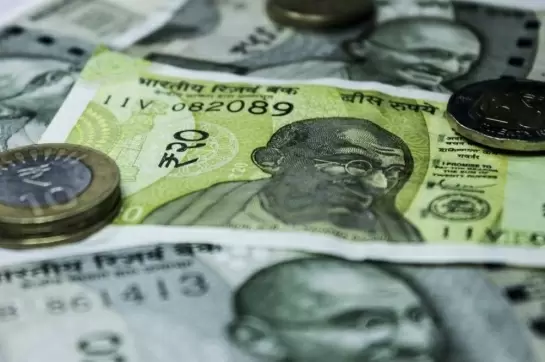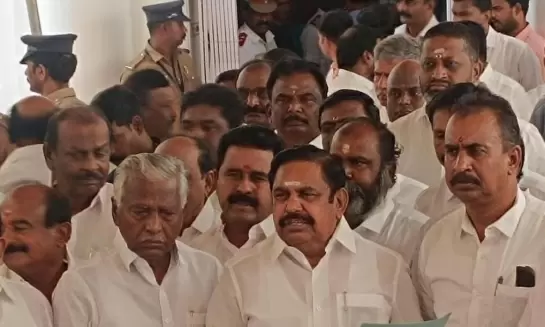India-China equation-post Mamallapuram (Column: Spy's Eye)
14-October-2019
The most important takeaway from the informal summit between Prime Minister Modi and President Xi Jinping at Mamallapuram, formerly Mahabalipuram -- the second since Wuhan that happened in April 2018 -- is that the two biggest nations with a deep civilisational legacy could successfully explore the areas of detente and cooperation independently of the third party influences. The scale of welcome accorded to the Chinese President reflected the cultural content of Indian hospitality that would not go unnoticed in terms of the message of willingness to work for mutually beneficial relationship that it put out for the visiting dignitary.
What Wuhan had registered was an explicit sharing of this thought in spite of the Doklam episode and at the end of a year since, the notable outcome for India-China relations is that, notwithstanding the adverse impact of Sino-Pak alliance on them, the two countries can retrieve the positives that were still out there. In a nutshell, the two summits acknowledge that India and China were not 'adversaries' but two large economic powers open to a healthy competition in a multipolar world. The big picture is that China could no more afford to take India for granted, that international relations today primarily weighed in for peace and development and that 'checks and balances' were now recognised as a legitimate instrument for preventing 'military' conflicts in the post- Cold War era.
The demeanour of President Xi at the cultural reception organised for him suggested that he was preoccupied with the thought of dealing with what was substantive in India-China relationship for him, at a time when his country had challenges on multiple fronts. China needs time to build itself as the second super power through the economic route - even as it continues to simultaneously consolidate its military power to reach parity with the US in that sphere.
Speed breakers that the Trump Presidency has created for the unfettered advantage accruing to China in its trade with US in the past would lead President Xi Jinping to an effort to retrieve whatever trade benefit it could continue getting from the Indian market. A trade deficit of over $52 billion confronting India in relation to China should get Xi to realise that things would not be the same again and that a pragmatic approach to India-China trade relations alone could serve the interests of the two countries. Prime Minister Modi is adept at showing the pathway to shared progress to President Jinping in this area -- he now knows Xi personally enough to make this process smooth. The outcome of the summit would be keenly awaited.
As far as the perennial issues around the LAC are concerned, Doklam tested India's political will not to tolerate any border encroachment or alteration of the existing dividers. China has brought in PLA to directly oversee the LAC and India has responded by pushing the army closer to the borders with China but both sides seemed to be in favour of maintaining peace and promoting confidence building measures there. Sino-Pak military alliance is a regional leverage that China no doubt thinks it can invoke against India but it is apparently more about the CPEC opening up new ways for China's economic expansion- including an outlet into the Arabian Sea.
On the issue of terrorism China knows it cannot uphold Pakistan beyond a point -- its response on Kashmir after the abrogation by India of Articles 370 and 35A has essentially been to advocate bilateral talks on the issue between India and Pakistan -- this is a low cost instrument for China to keep Pakistan humoured. China would have sensed that conversion of Ladakh into a Union Territory gave the Centre here a more direct control on this sensitive territory on the Chinese border. Moreover, the fear of radicalisation of its Muslim minority has come alive for the Chinese leadership - its historical memory of how in the Cold War era Pakistan helped the US-led West to encourage Islamic militancy in Xinjiang and Uzbekistan bordering Afghanistan would not have been completely erased.
The possibility of a synchronised mischief by China and Pakistan on our borders has been factored in by our Defence forces - even though such an eventuality still remains only in the background. India has activated its participation in QUAD but the focus of this US-Japan- India-Australia convergence is so far on maintenance of 'rules based regime' in the Indo-Pacific maritime zone. President Xi must have got the message that India would be willing to halt any designs of the Chinese in the Indian Ocean further up north through this steadily developing multi lateral -- but as yet non-military -- partnership. Since Wuhan, India's Look East policy has strengthened our friendship with many countries in the East and this also works to India's advantage.
The statements made by the two sides at this summit would be analysed by strategic experts but given the content and the unambiguous language of both, certain deductions can be made upfront. Surely, China has taken cognisance of the fact that in the Modi regime India is now a major voice in the world community on matters of global security and economic relations and that Prime Minister Modi would not be found wanting in responding to any positive overtures from Xi Jinping. India's willingness to work for a 'balance of power' to ensure global peace has been in evidence in the recent period. All of this provided a backdrop to the Mamallapuram summit that favoured the pursuit of understanding and de-emphasised friction.
Prime Minister Modi declared that 'Chennai Connect' had opened a new chapter in India-China cooperation and President Xi Jinping on his part disclosed that in the multiple conversations he had had with the Indian leader, there was heart-to-heart exchange of views - like among friends - on 'bilateral matters'. As expected trade relations were on top of the agenda - an indication of this coming from the announcement by India that Finance Minister Nirmala Sitharaman would, along with the Chinese Vice Premier, lead the initiative to develop a mechanism for carrying trade, investment and services forward.
President Xi elaborated further on the tenor of discussions by saying that the two nations now enjoyed a 'deeper strategic communication and effective practical cooperation'. It is clear that Xi Jinping did not get involved with Kashmir - one would like to believe that the Indian delegation, while broaching the subject of terrorism, succeeded in waking up the Chinese to the reality that this new faith-based global terror invoking Jehad, which was emanating from Pakistan, was dangerous for both India and China in the long run. In a nutshell, the second informal summit between Prime Minister Modi and President Xi Jinping is an advance over Wuhan and has established a bilateral grid that suits the security and economic strategy of India. There is no doubt that the Prime Minister will handle it well to India's long-term advantage.IANS
Karnataka Withdraws CID Probe in Ranya Rao Gold Smuggling Case
New Kerala Guv Strikes Cordial Tone, Hosts CM Vijayan And FM Sitharaman In Delhi
Digital Payments Surge in India: 18,120 Crore Transactions in FY24-25
Weather Dept Predicts Heavy Rains In Several TN Districts
Chitra Subramaniam’s Book Boforsgate Exposes Arms Trade, Corruption, and Political Intrigue









